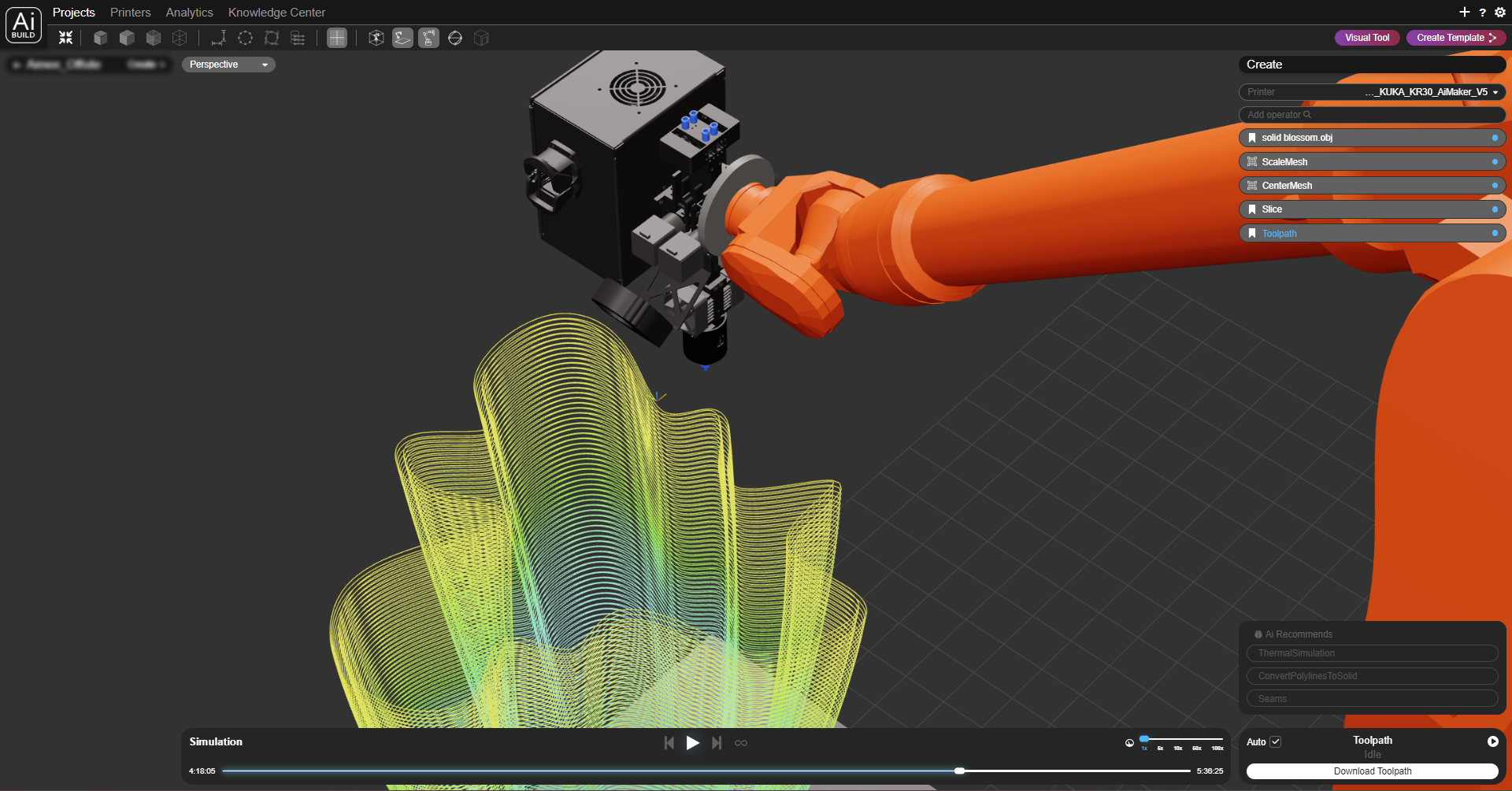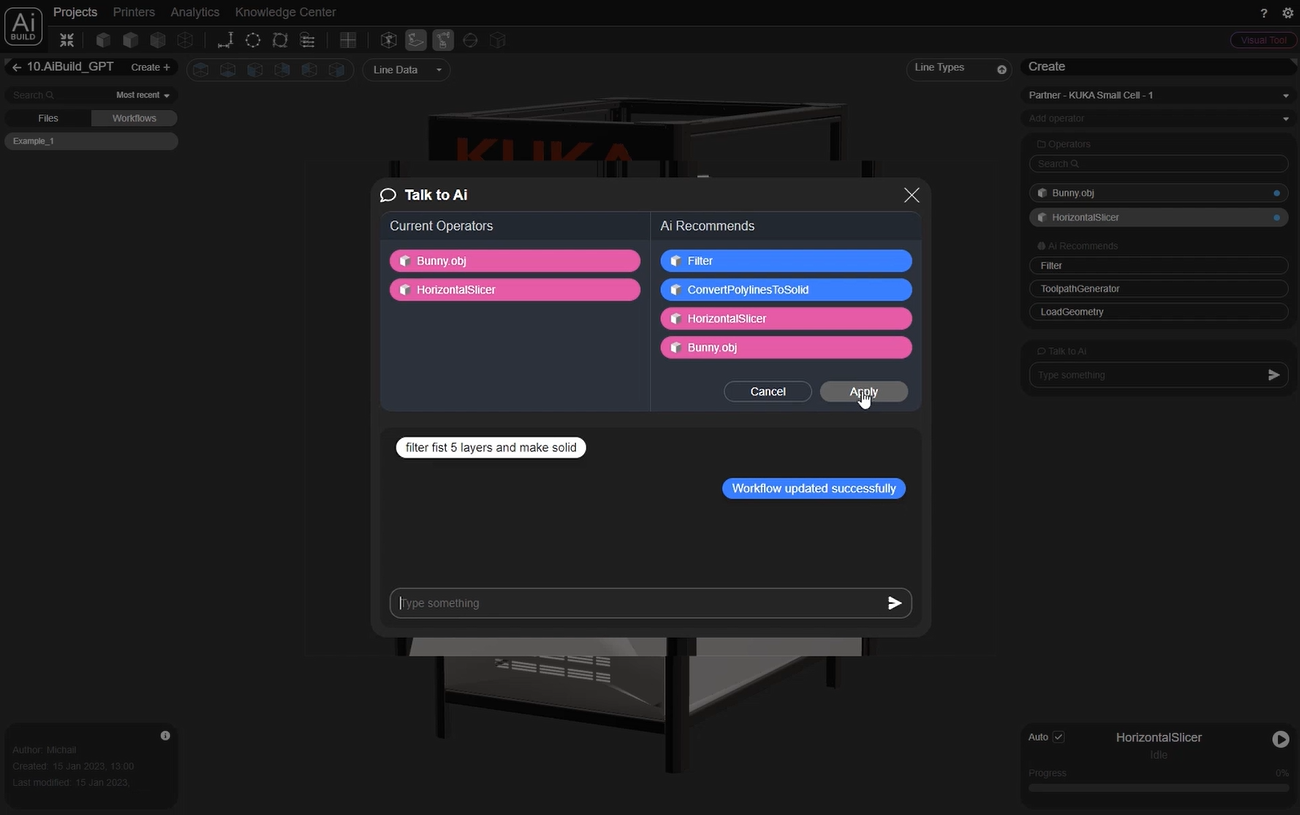
Since the conception of additive manufacturing (AM) there has been both anticipation and expectation around its potential to positively disrupt the manufacturing process, collapse the supply chain and support a circular economy.
The core issues in fully realizing that potential have been around for some time and are commonly operational related fundamentals required to ensure AM evolves to the point that the jump is made from R&D test case, to broad mainstream adoption. Frequently these include design printability, lack of automation (high dependency on manual intervention), repeatability and low waste, high quality output.
The removal of these blockers is not just an opportunity for AM to impact the customer P&L and more efficient use of capital; it is transformational in terms of AM’s influence on corporate, regional and global wellbeing. Recent events including geopolitical state, pandemic, climate change et al, have thrown a spotlight on the fragility of supply chains, how and where product is manufactured, stored and destined, plus the time and resources consumed to facilitate the status quo.
So, a couple of questions….
What will drive the inflection points in accelerating global AM adoption to full its potential? and;
How can AM users keep pace with complex application evolution and future proof their investment?
Here’s AiBuild’s view on the core essentials:
AI-Driven Simplicity:
Adoption of any system and its potential benefit, however promising, is directly influenced by its ease of use, the value it brings via process optimization and the integrity of its output. The “AI” in our name is no accident and since founding in 2015 we have been exploring how its incorporation can benefit the AM industry as a whole.

Without question, Ai enabled software will continue to make a rapid and seismic impact throughout the AM process. Weaving Ai into product development strategy, user experience and system output drives faster innovation, increased capability and a step change in system performance overall.
We have seen this first hand, where our platform (AiSync) utilizes machine learning to monitor quality control and defect detection, identifying real-time print anomalies compared to the build simulation. AiBuild also launched natural language processing via GPT-4 integration at Formnext 2023, whereby a user can quickly execute complex slicing strategies and set build parameters through natural language interaction or instructions via a simple UI.
Consequently Ai enabled AM consolidates the expertise into the platform, making optimized AM accessible to any user (conveniently, also local language agnostic), from design file import, through advanced slicing strategy guidance, production monitoring, alerting and reporting. Ai is a fundamental game changer and a catalyst in AM’s ROI and propensity to scale.
Ease of Innovation and Distribution:
Secure cloud software hosting plays a key role in removing a reliance on tacit knowledge silos and exposure to single points of failure. With AM groups potentially running mixed machine inventory, the ability for an organization to control any quantity of LFAM machine types, in any location, cross application and material type, via a single UI or section secured view, enables simplicity of operation and promotes knowledge capture/sharing in the workflow.

Bi-directional flow of machine instructions and print data in real-time underpins the delivery of multiple AM manufacturing strategies such as local or remote printing at the point of requirement, as well as micro-factory production.
From a user perspective, cloud deployment (including GovCloud) enables secure, simple team collaboration internally, as well as supporting rapid deployment of software feature requests and enhancements, where client-led software innovation and support can be delivered further and faster.
Adopting A User Centric, Holistic View:
Consumers regard AM as a manufacturing process rather than its discrete, individual system components (i.e. software, hardware, materials). As such there is a co-dependency, whereby both AM partner collaboration and deep software to hardware integration is essential in ensuring that these components operate as a unified system, driving optimized output.

In 2015 AiBuild launched our collaboration hub – AiLab, the testing and verification from which feeds our software innovation, customer support teams and development strategies with our Hardware and Materials partners. With AM system capability accelerated through aligning people, process and technology, this continued collaboration with our amazing partners is key to achieving customer objectives through enhanced system performance.
To Summarize:
Even quite recently AM was described as part of the “Factory of the Future”. In reality it forms part of the “Factory of Today” and as we continue to innovate, AM will continue to secure its place as part of day-to-day operations.
Daghan Cam, Co-Founder & CEO of Ai Build, will be participating at the upcoming Additive Manufacturing Strategies business summit in New York, February 6 to 8, 2024. Cam will be giving a talk on “Automated 3D Printing.”
Subscribe to Our Email Newsletter
Stay up-to-date on all the latest news from the 3D printing industry and receive information and offers from third party vendors.
Print Services
Upload your 3D Models and get them printed quickly and efficiently.
You May Also Like
Making 3D Printing Personal: How Faraz Faruqi Is Rethinking Digital Design at MIT CSAIL
What if your 3D printer could think more like an intelligent assistant, able to reason through a design idea, ask questions, and deliver something that works exactly the way the...
Reinventing Reindustrialization: Why NAVWAR Project Manager Spencer Koroly Invented a Made-in-America 3D Printer
It has become virtually impossible to regularly follow additive manufacturing (AM) industry news and not stumble across the term “defense industrial base” (DIB), a concept encompassing all the many diverse...
Heating Up: 3D Systems’ Scott Green Discusses 3D Printing’s Potential in the Data Center Industry
The relentless rise of NVIDIA, the steadily increasing pledges of major private and public investments in national infrastructure projects around the world, and the general cultural obsession with AI have...
Formlabs Teams Up with DMG MORI in Japan
In late June, Nick Graham, Chief Revenue Officer at Formlabs, announced on LinkedIn that the company had partnered with DMG MORI, one of the world’s leading machine tool companies, to...

































